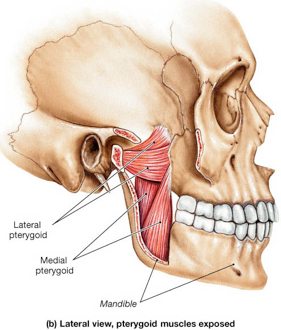Bodywork
Lobby of Tacoma office in the Historic Passages Building
WELCOME!
I am a believer that bodies benefit from bodywork and massage. Touch is an extremely valuable part of the human experience and our daily lives require quite a demand on our physical selves: muscles, joints and connective tissue as well as our mental & emotional bodies.
The body is a very complex, interconnected system all working together as one. Because of this interconnected network, I address your whole self to assist in specific treatment work and realignment so you can move forward in the world with a sense of ease.
The environment I cultivate is gender-affirming, trauma-informed and body-positive using a variety of massage styles tailoring a unique experience for each individual. I enjoy working with all people including marginalized populations with intersectional identities including queer, trans, gender diverse, BIPOC, disabled, LGBTQI+ and a myriad of other communities who have historically dealt with systemic oppression.
During a bodywork session with me, an intentional container is held for you to release what may no longer be serving thus creating an opening to invite in an invigorating and uplifting experience. My approach combines many different styles of massage to work with each individually unique body, treating your body as a whole system to assist in the empowerment and restoration of itself.
-
Gender-affirming care
Transgender care
Top surgery pre/post
Surgical prep/post op
Scar tissue treatments
Binding discomfort/posture
Range of motion improvement
Chronic pain
Treatment specific work
Jaw pain/Intraoral work
Trauma-informed care
Headaches/Stress
Balance restoration/energetic openings
I use a variety of techniques and styles of massage, a few of which are listed below
-
Fascial restrictions can be painful and cause restricted range of motion within the body. Myofascial release gently yet deeply unsticks these layers of bound tissue and muscle.
What is fascia?
Fascia is a band or sheet of connective tissue, primarily collagen, beneath the skin that attaches, stabilizes, encloses, and separates muscles and other internal organs.
Facial restrictions can be painful and cause restricted range of motion within the body. Fascia is a specialized system of the body that has an appearance similar to a spider's web or a sweater. Fascia is very densely woven, covering every muscle, bone, nerve, artery and vein, as well as, all of our internal organs.
One of the most interesting aspect of the fascial system is that it is not just a system of separate coverings. It is actually one continuous structure that exists from head to toe without interruption. In this way you can begin to see that each part of the entire body is connected to every other part by the fascia, like the yarn in a sweater. If there is a break in the fascia due to a surgery or injury this will cause a disruption in that continuous sheath and potentially cause restrictions in movemen or further issues. We can address this work with scar tissue release
Myofascial Release is a very effective hands-on technique that involves applying gentle sustained pressure into the myofascial connective tissue restrictions to eliminate pain and restore motion. The goal of myofascial therapy is to stretch and loosen the fascia so that it and other contiguous structures can move more freely again
-
I work with all types of scars and scar tissue and have a specialty working with scars post Top Surgery.
You may consider scar tissue release therapy for a multitude of reasons. No matter how young or old your scar is there are many benefits of the work.
While the body’s formation of scar tissue is a great demonstration of self-preservation, the effect can potentially set the stage for problems down the road. Composed primarily of collagen, scar tissue’s fibrosity prohibits adequate circulation. In addition to the physical limitations of collagenous tissue, the lack of blood flow and lymph drainage occurring in scar tissue makes it vulnerable to dysfunction. The resulting stress on a scar’s surrounding structures may include:
Nerve impingement
Pain
Numbness
Limited range of motion and flexibility
Postural misalignment
Muscle atrophy
TissuehypoxiaIn relation to a new scar, we can begin scar tissue release therapy gently around the scar itself typically around 4 weeks after initial surgery/injury. After the incision has healed over ( usually 8-10 weeks after surgery) we can then begin work on the actual scar as to increase range of motion, circulation and mobility early on in recovery.
Scar tissue can also form from using frequent injectables such as HRT or insulin. In the example of weekly subcutaneous injections in the belly for a year or more, scar tissue can begin building up in the area and causing blood flow restriction and even low-back strain. I use a mix of myofascial and scar tissue techniques to address the abdomen / belly to help break up these restrictions.
An additional benefit to this work is that the appearance of the scar will typically start to fade after consistent hands-on work with it
Please visit the Top Surgery page as an example of a similar protocol that we can work with regardless of where your scar(s) may be located.
-
-
Intraoral massage works on muscles inside and outside the mouth, as well as on the neck, throat and head. It is a very effective way to decrease symptoms of pain, joint clicking/popping/locking in the jaw and increase range of motion and circulation to the specific muscle tissues.
Intraoral massage can feel a bit intense , both because the practitioners hand is inside of your mouth (gloved) and because likely the muscles will be very tender as they’re being relieved of pain. The results following these treatments are usually astounding.
A few common reasons you may consider this work:
TMJ PAIN:
The temporomandibular joint (TMJ) acts like a sliding hinge, connecting your jawbone to your skull. TMJ disorders cause pain in your jaw joint and in the muscles that control that movement. This pain can occur from jaw injury, arthritis, or grinding your teeth, and can result in clicking or popping noises. Intra-oral massage relieves pain from the tight jaw muscles.
TEETH GRINDING:
Formally known as bruxism, this is a condition where you unconsciously grind, gnash, or clench your teeth, either during the day or at night. This grinding can be frequent and intense enough to lead to jaw disorders, headaches, and damaged teeth. Massage releases the muscles associated with chewing and jaw clenching.
MIGRAINES:
Some migraines are caused by pressure on a bone found in your skull called the sphenoid bone. It is also found in the upper reaches of your oral cavity. Massaging skull and jaw muscles can reduce pressure on the sphenoid bone and help relieve migraines.
WHIPLASH:
The neck is usually the primary victim of whiplash, but it can also strain the muscles and soft tissues of the throat and jaw. In these cases, intra-oral massage can reduce stress placed on the jaw muscles and joints.
*Those who have experienced any dental trauma related to the jaw may also significantly benefit from this work.
**Luigi Continenza, LMT, is endorsed by the state of WA as an intraoral practitioner


